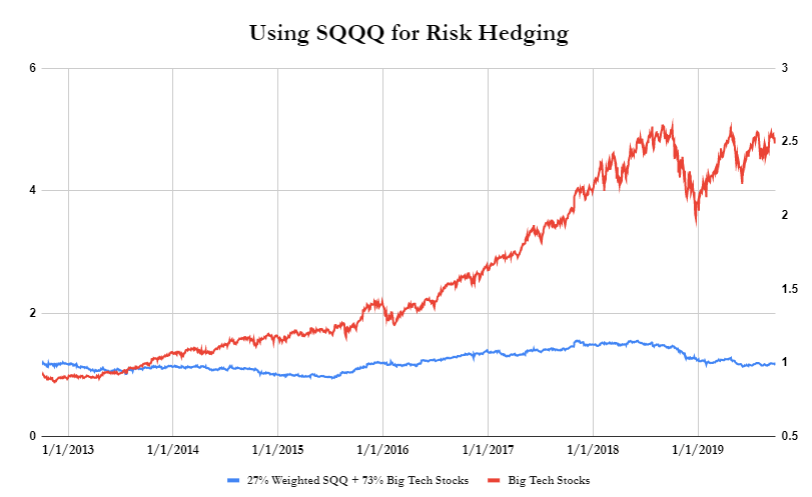
In the ever-evolving landscape of the stock market, certain instruments emerge as intriguing options for investors looking to capitalize on market volatility. ProShares UltraPro Short QQQ (SQQQ) is one such instrument that has gained attention for its unique strategy. This exchange-traded fund (ETF) aims to provide three times the inverse daily performance of the Nasdaq-100 Index, making it a popular choice for traders seeking to profit from potential downturns in the tech-heavy index. In this article, we’ll delve into the dynamics of SQQQ stock price, exploring its features, factors influencing its movements, and considerations for investors.
Table of Contents
ToggleUnderstanding SQQQ’s Objective:
SQQQ operates with the goal of delivering triple inverse returns compared to the Nasdaq-100 Index on a daily basis. The Nasdaq-100 Index comprises 100 of the largest non-financial companies listed on the Nasdaq Stock Market, with a heavy emphasis on technology stocks. Therefore, SQQQ serves as a leveraged and inverse play on the Nasdaq-100, allowing traders to potentially profit from declines in the index.
Factors Influencing SQQQ Stock Price:
- Market Sentiment: SQQQ’s performance is heavily influenced by market sentiment, particularly in the technology sector. When investors anticipate a decline in the Nasdaq-100, they may turn to SQQQ as a hedge or to profit from the expected downturn. Conversely, during bullish market conditions, SQQQ tends to face headwinds.
- Nasdaq-100 Index Movements: The primary driver of SQQQ’s performance is the Nasdaq-100 Index. As the index experiences fluctuations, SQQQ reacts accordingly, seeking to magnify the opposite movements. Traders and investors closely monitor the Nasdaq-100’s trends and potential catalysts to make informed decisions about their SQQQ positions.
- Volatility Levels: SQQQ tends to perform better in periods of heightened market volatility. Increased volatility often accompanies market downturns, providing an opportunity for SQQQ to deliver amplified returns. Traders need to be vigilant about overall market volatility as it directly impacts the effectiveness of SQQQ as a hedging or profit-seeking instrument.
- Interest Rates and Macro-Economic Factors: Macro-economic factors, such as interest rates and global economic conditions, can influence SQQQ’s performance. Economic uncertainties may drive investors towards safer assets, impacting technology stocks and consequently affecting the Nasdaq-100 Index, and subsequently, SQQQ.
- Leverage Decay: It’s important to note that SQQQ is a leveraged ETF, and leveraged funds can be subject to “leverage decay.” This phenomenon occurs due to the compounding of daily returns, and over extended periods, the performance may deviate from the expected three times inverse return. Traders must be aware of this decay and its potential impact on long-term investments.
Considerations for Investors:
- Short-Term Trading vs. Long-Term Investing: SQQQ is designed for short-term trading and not for long-term investment strategies. Due to the compounding effects of daily returns, the ETF may not accurately reflect its three times inverse objective over extended periods. Investors should carefully assess their risk tolerance and investment horizon.
- Risk Management: Given the volatile nature of SQQQ and its leveraged structure, effective risk management is crucial. Traders should use stop-loss orders and employ disciplined risk-reward strategies to mitigate potential losses. Understanding the intricacies of leveraged ETFs is paramount for successful trading.
- Monitoring the Nasdaq-100: Since SQQQ is directly linked to the Nasdaq-100 Index, investors should stay abreast of developments in the technology sector. News, earnings reports, and other market-moving events can significantly impact the Nasdaq-100, influencing SQQQ’s performance.
- Diversification: SQQQ is a specialized instrument and should be used judiciously within a diversified portfolio. Relying solely on inverse leveraged ETFs exposes investors to specific risks, and diversification can help manage overall portfolio risk.
Conclusion:
SQQQ, with its triple-inverse exposure to the Nasdaq-100 Index, offers a unique avenue for traders to capitalize on market downturns. However, its leveraged nature and susceptibility to leverage decay make it a tool best suited for short-term trading rather than long-term investment. As with any financial instrument, understanding the dynamics of SQQQ, closely monitoring market conditions, and implementing effective risk management strategies are crucial for investors seeking to navigate the roller coaster of SQQQ stock price movements.





